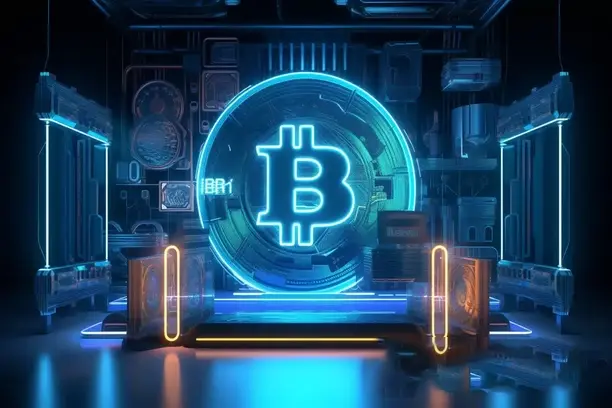The Solana blockchain has become a popular choice in the cryptocurrency world in recent years, with its high performance and low transaction costs making it an ideal platform for many Decentralized Finance (DeFi) applications. In this article, we will introduce the largest Swap platform on the Solana chain, analyzing how it works, how to use it and how to securely and efficiently exchange assets on the Solana network. Whether you are new to cryptocurrencies or an experienced user, this article will provide you with an in-depth understanding and practical instructions.

Overview of the Swap Ecosystem for Solana Chain
The Decentralized Exchange (DEX) ecosystem of the Solana chain has flourished over the past few years, attracting a large number of users and developers.Solana solves the scalability problems faced by blockchain networks such as Ether with its unique consensus mechanism and high throughput. As an efficient chain, Solana supports fast, low-cost transactions and is particularly suited for Decentralized Exchange (DEX) and Decentralized Finance (DeFi) applications.
Swap platforms on the Solana network, which are typically decentralized liquidity pools, allow users to exchange assets through an automated market maker (AMM) mechanism. The best known Swap platforms on the Solana chain are Serum and Raydium, which dominate the Solana chain and offer a fast, low-fee trading experience through smart contracts combined with Solana's efficient performance.
The Largest Swap Platform on the Solana Chain: Serum
Serum is currently one of the largest decentralized exchanges on the Solana chain and the first DEX to implement a full on-chain order book.Serum not only employs an automated market maker (AMM) mechanism, but also incorporates a traditional order book model, allowing it to offer the efficiency of a liquidity pool while enjoying the depth and flexibility of a traditional exchange.
Serum is unique in its Solana-based high throughput and low latency design, which allows transactions to be executed very quickly and settled in near real-time. What this means for users is that they won't experience high fees or transaction congestion like they would with Ether when executing large transactions.
Serum also offers a rich set of trading pairs that allow users to exchange a wide range of crypto assets on its platform. For example, Solana, USDT, USDC and other mainstream coins can be exchanged efficiently on Serum. In order to ensure security, the Serum platform also has built-in multiple verification mechanisms to safeguard users' funds.

How to Swap with Serum
Swapping assets on Serum is relatively simple. Here are some basic steps:
- Connecting Wallets: First, you need to connect to the Serum platform using a wallet that supports the Solana network, such as Phantom or Sollet.
- Selecting a Pair: Once you are on Serum's DEX page, you can choose which asset pairs you want to exchange. For example, select "SOL/USDT" to trade Solana against USDT.
- Number of input exchanges: Enter the amount you wish to exchange in the corresponding input box and the system will automatically calculate the target number of assets you can obtain.
- Confirmation of transaction: After verifying the transaction information and confirming the transaction, the system will initiate a transaction to your wallet to ensure the security of the exchange process.
- Waiting for settlement: Thanks to the efficiency of the Solana chain, transactions settle in near real-time, and you can quickly see how your assets are moving.
The order book mechanism adopted by Serum ensures the depth of liquidity and low slippage even for large trades, making the user experience more stable compared to traditional AMM DEX.
Raydium: Another Popular Swap Platform
Raydium is another popular DEX on the Solana network, offering similar functionality to Serum, but Raydium focuses more on integration with the rest of the Solana ecosystem, especially in the area of mobility.Raydium is an exchange platform based on the AMM model, which leverages the efficiencies of the Solana network to help users achieve low cost, rapid asset exchange through the efficiency of the Solana network.
Raydium not only supports common trading pairs, but is also able to provide higher liquidity by interacting with the Serum order book. This means that Raydium users can not only exchange assets in Raydium's own liquidity pool, but also enjoy a wider range of pairs and lower slippage by connecting to Serum's order book.
Raydium has further enhanced its liquidity and user experience through innovative mechanisms such as Fusion Pools, and has become one of the key Swap platforms on the Solana chain.
How to Swap with Raydium
Similar to Serum, Raydium is very intuitive to use. Here are some basic steps for trading with Raydium:
- Connecting Wallets: Users need to connect to Raydium via a Solana-enabled wallet such as Phantom or Sollet.
- Selecting a PairOn the Raydium platform, users can choose from a variety of cryptocurrency pairs to exchange, such as SOL/USDC or BTC/USDT.
- Enter the transaction amount: After selecting a trading pair, users can fill in the input box with the number of assets they wish to exchange, and the system will automatically display the number of target assets.
- Confirmation of transaction: Click on the Confirm button and the system will prompt to confirm the transaction. The transaction request is sent to the user's wallet.
- Waiting for settlement: Solana's transaction processing is very fast, with transactions typically completed within seconds and users able to view the results instantly.
The advantage of Raydium is that it integrates the mobility of Serum while providing a cleaner, easier-to-use interface that is suitable for all types of users, especially novice users.
Factors to consider when choosing a Swap platform
When choosing a Swap platform on Solana, users need to consider several factors to ensure an optimal trading experience. Here are some of the key elements:
1. Liquidity: Liquidity is one of the core aspects of the Swap platform. The more liquid the platform is, the less slippage and more stable the trading price will be. Serum and Raydium both have high liquidity, but when choosing between them, users should pay attention to the liquidity of the asset pairs they want to trade.
2. Transaction fees: Although transaction fees on the Solana chain are relatively low, the fee structure varies from platform to platform. Generally speaking, the transaction fees of Serum and Raydium are low, but users should still know the details of the fees in advance to avoid unexpected costs.
3. User Interface and Ease of Use: A clear and intuitive user interface can significantly enhance the trading experience. Raydium offers a more user-friendly interface for novice users, while Serum is more focused on the needs of professional traders and has more sophisticated features.
4. Security: Choosing a secure and reliable Swap platform is critical. Users should pay attention to whether the platform provides multiple security verifications, contract auditing and other security measures.
summarize
Swap platforms on the Solana chain, such as Serum and Raydium, provide users with an efficient, low-fee decentralized trading experience. Through these platforms, users can easily exchange crypto assets on Solana chain and enjoy the advantages of fast settlement and low slippage. Whether you are an experienced trader or a newbie to cryptocurrencies, choosing the right platform for you and understanding its operating procedures and considerations will help you better invest and trade in the DeFi world.














